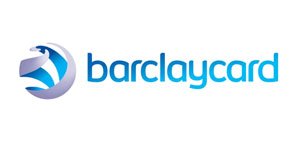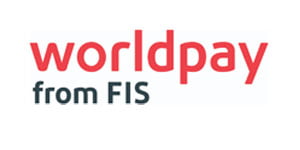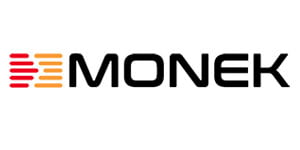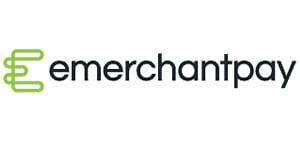What is a High Risk Merchant Account?
A high risk merchant account is a specialised bank account that allows businesses with a higher risk of fraud or chargebacks to accept card payments. Certain types of industries, including tobacco and firearm sales, are often considered high risk by many payment processors.
Additionally, businesses that sell internationally, have subscription pricing, or have low cash in the bank may be viewed as high-risk by payment processors. However, high-risk businesses can still accept card payments despite these challenges by applying for a high-risk merchant account.
This article will discuss what makes a business high-risk and what factors payment processors consider when evaluating applications. We will also explore how high-risk accounts differ from regular accounts regarding fees, application processes, and cash reserve requirements.
What makes a business high risk?
No single framework or central authority in the payments industry determines which factors are risky. Instead, each payment processor, bank, and payment service provider compiles its own standards. As a result, some companies state upfront that they don’t work with specific industries, while others welcome all applicants.
Generally, payment service providers are more stringent than merchant account providers about which types of businesses they accept. In either case, you’ll be asked to submit an application with specifics about your business.
Ultimately, the company will decide about each application based on internal criteria. Some of the risk factors a company might consider include:
Industries that might be considered high risk
Payment processors often view specific industries as high-risk due to a higher likelihood of chargebacks or fraudulent activity.
These industries include:
- Accounting and tax preparation.
- Adult products or services.
- Age-restricted items.
- Automotive parts and accessories.
- Cigarettes and tobacco.
- Collections.
- Computer software.
- Credit repair.
- Dating services.
- Debt consolidation.
- Diet and weight loss programs.
- Digital downloads.
- Document preparation.
- Dropshipping.
- Electronics.
- Extended warranties.
- Fantasy sports.
- Financial Services.
- Firearms and firearms accessories.
- Free trials.
- Furniture.
- Hunting and outdoor equipment.
- Jet charter.
- Legal services.
- Mail-order transactions.
- Multilevel marketing.
- Nonprofit.
- Nutraceuticals and supplements.
- Online gaming and casinos.
- Pawn shops.
- Precious metals and coins.
- Property.
- Search engine optimisation, SEO, search engine marketing, or SEM services.
- Self-storage.
- Smoking accessories.
- Software as a service, or SaaS, companies.
- Tech support.
- Travel and vacations.
- Vape and e-cigarettes.
- Web design.
Other risk factors
In addition to specific industries, payment processors may consider other factors when evaluating high-risk applications.
These factors include:
- Accepting subscription-style payments.
- It is on the Member Alert to Control High-Risk Merchants, or MATCH list — a list managed by Mastercard that monitors merchant behaviour, like chargeback history.
- Large average transaction sizes.
- High sales volumes.
- Highly regulated industries.
- International sales.
- A large number of card-not-present transactions.
- Little to no business experience.
- Extended fulfilment time frames.
- New or poor credit scores.
- Past fraud or illegal activity.
NOTE: For more information visit
Wikipedia Merchant Account. Whether a merchant enters into a merchant agreement directly with an acquiring bank or through an aggregator, the agreement contractually binds the merchant to obey the operating regulations established by the
card associations.
How do high risk merchant accounts differ from regular accounts?
What distinguishes high risk merchant accounts from regular accounts?
High-risk accounts typically have higher payment processing fees compared to regular accounts. For instance, a standard small-business account may have a payment processing fee of 0.3% on top of the interchange rate, while a high-risk account could have a fee of 3.5%. In addition, high-risk accounts may experience a lengthier application process, requiring the submission of more detailed information about their business and may undergo personal credit checks.
Another difference between high-risk and regular accounts is the higher chargeback fees associated with high-risk accounts. Chargeback fees can range from £20 to £100, and businesses must refund the original transaction amount.
High-risk accounts may also be subject to cash reserve requirements, where payment processors may hold onto some of the business’s cash as a hedge against potential risks. Cash reserve requirements can be in the form of capped reserves, rolling reserves, or upfront reserves.
Moreover, high-risk accounts might have volume caps limiting the amount of money that can be processed monthly. Finally, high-risk accounts may have additional technical requirements, such as age verification tools for businesses that sell age-restricted products or services.
How do payment processors decide to open a high risk account?
Business owners usually do not apply for a merchant account directly. Instead, they seek out a payment processor to partner with. The payment processor then finds a banking partner to open a merchant account.
- The payment processor will typically begin the process by conversing with the business owner to understand their situation and what makes them high risk. This allows the payment processor to gather the necessary data to assess the level of risk involved and how they can help the business.
- Payment processors take a long-term approach when opening a high-risk account, as they have an ongoing financial stake in the business. As a result, they will use both personal discretion and computer-based decision-making tools to evaluate the application and ensure it is a good fit.
- Once the payment processor has determined that a business is suitable for a high-risk account, the next step is finding a banking partner to open the account. This involves identifying a bank that will agree to underwrite the policies of the high-risk account.
- Many payment processors work with multiple banks to find a good fit for the business. However, final approval is ultimately up to the banks themselves. Even if a payment processor is willing to partner with a business, there is no guarantee that a bank will approve the application.
The business can begin accepting card payments if a banking partner is identified and the account is set up. However, it is essential to note that applying for a high-risk account does not guarantee approval. Businesses with multiple risk factors or a history of fraud may find obtaining a payment partner or merchant account challenging.
What to do if you need a high risk merchant account
If you require a high risk merchant account, there are several best practices you can follow to increase your chances of finding a payment partner:
- Be transparent and upfront during the application process. Trying to hide information can be detrimental to your cause. Communication and transparency are only going to help in these situations.
- Evaluate your cash reserves. A healthy cash reserve can indicate stability. Banks prefer to see 25% to 50% of your monthly card transaction volume in your account.
- Collect the necessary documentation. During the application process, be ready to provide at least three to six months of bank statements displaying where cash is coming from and where it is being spent. Some banks may require a few years of tax returns.
- Determine which variables are within your control. While you can’t change whether payment companies consider your high industry risk, you can take steps to improve your credit score or reduce chargebacks if they impact your situation. Consult your payment company to see if you can lower your risk, which may result in better rates.
- Communicate with your customers. Not all chargebacks are fraudulent; dissatisfied customers cause some. You can reduce these chargebacks by ensuring that your return and shipping policies are clear and easy to locate and that customers can reach you easily if they need to resolve an issue.
- Be prepared to learn. Don’t pretend to be an expert in payment processing. Instead, rely on the knowledge of payment processor representatives. Ask for their assistance in establishing your payment process and be willing to implement their recommendations.








